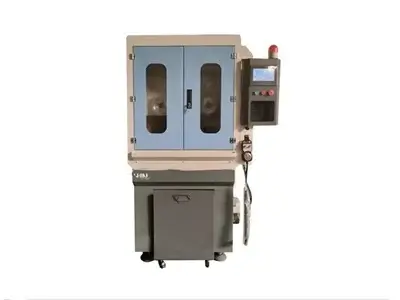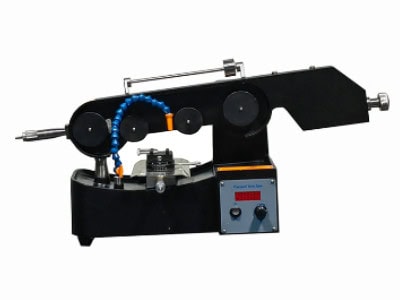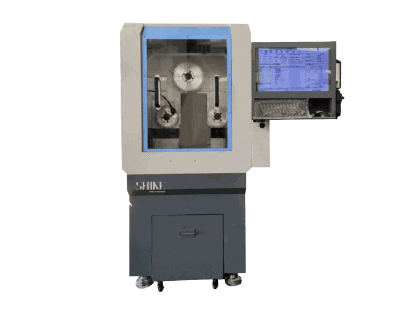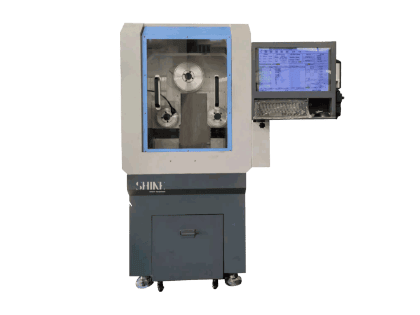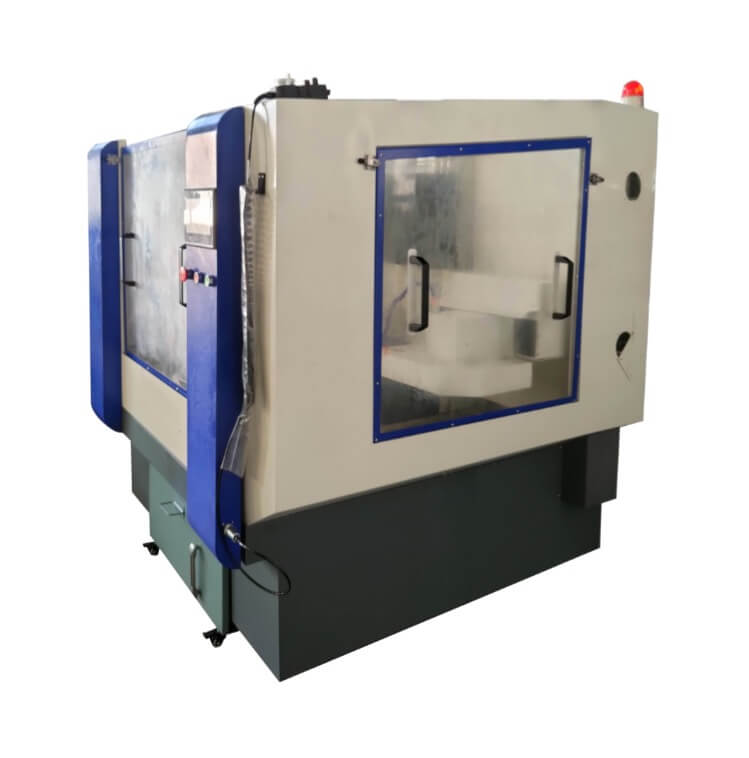Table of Contents
Introduction-Optoelectronic Material Cutting
In the ever-evolving landscape of technology and innovation, optoelectronic materials play a crucial role in various industries, from telecommunications to healthcare. Cutting these materials with precision is essential for crafting intricate components with optimal optical properties. In this comprehensive guide, we’ll explore the intricacies of cutting optoelectronic materials such as optical glass, quartz, YAG, Ge, and more, covering everything from the challenges involved to the best practices for achieving pristine results.
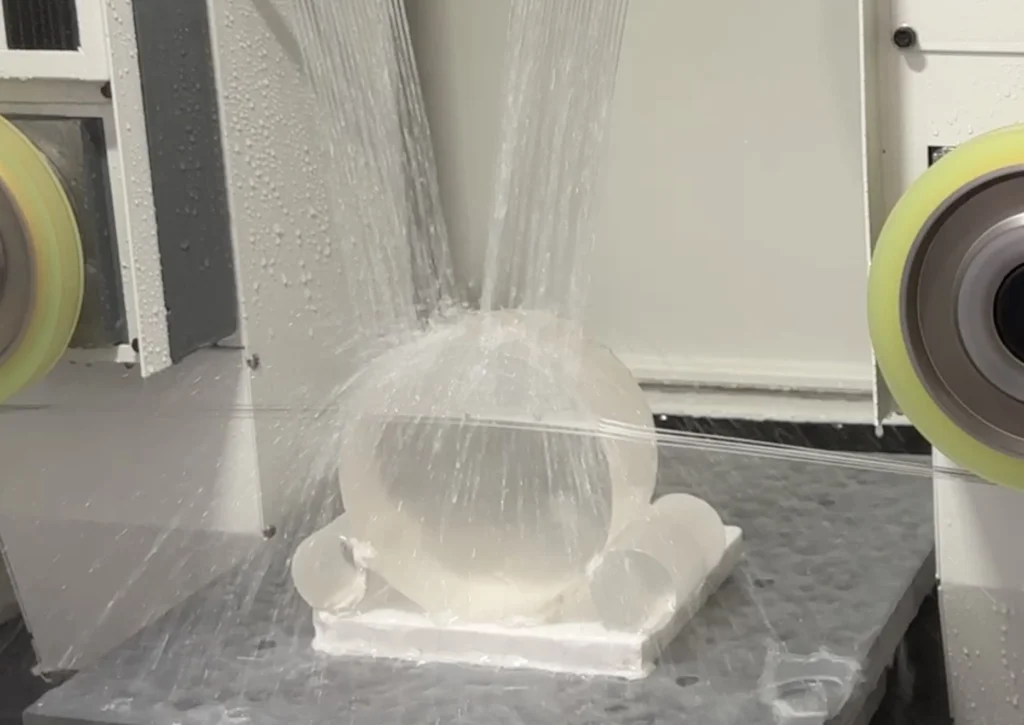
Exploring Optoelectronic Material Cutting Methods
In the ever-evolving landscape of technology and innovation, optoelectronic materials play a crucial role in various industries, from telecommunications to healthcare. Cutting these materials with precision is essential for crafting intricate components with optimal optical properties. In this comprehensive guide, we’ll explore the intricacies of cutting optoelectronic materials such as optical glass, quartz, YAG, Ge, and more, covering everything from the challenges involved to the best practices for achieving pristine results.

| Advantages | Disadvantages | |
| Laser Cutting | High precision Minimal material contact Versatility in cutting various materials | Limited thickness capability for some materials Higher energy consumption |
| Water Jet Cutting | Versatility in cutting various materials Minimal heat-affected zone | Lower precision compared to other methods Slower cutting speeds |
| Mechanical Cutting (e.g., Sawing, Milling) | Suitable for thick materials Lower initial investment cost | May cause surface damage Lower precision Limited to certain materials |
| Abrasive Cutting (e.g., Abrasive Water Jet Cutting) | Versatile Suitable for hard materials Minimal heat generation | Slower cutting speeds Higher operating costs due to abrasive use |
| Diamond Wire Cutting (DWC) | High precision Minimal material damage Efficiency Versatility | Initial investment cost may be higher |
Laser Cutting:
Advantages:
High Precision: Laser cutting offers precise and accurate cuts, with the ability to achieve intricate designs.
Versatility: Laser cutting is suitable for various materials, including metals, plastics, wood, and fabrics.
Minimal Material Contact: Laser cutting is non-contact, minimizing the risk of material deformation or contamination.
Minimal Heat-Affected Zone: Laser cutting produces narrow kerfs and minimal thermal distortion, preserving material integrity.
Disadvantages:
Limited Thickness: Laser cutting may have limitations on the thickness of certain materials.
Higher Energy Consumption: Laser cutting systems can consume significant energy, resulting in higher operating costs.
Initial Investment: The initial cost of laser cutting equipment and maintenance can be substantial.
Water Jet Cutting:
Advantages:
Versatility: Water jet cutting can cut a wide range of materials, including metals, ceramics, stone, and composites.
Minimal Heat Generation: Water jet cutting is a cold-cutting process, minimizing the risk of thermal damage to materials.
Environmentally Friendly: Water jet cutting uses water and abrasive materials, making it an environmentally friendly option.
No Material Hardness Limitation: Water jet cutting can handle materials of varying hardness without compromising cutting quality.
Disadvantages:
Slower Cutting Speeds: Water jet cutting tends to have slower cutting speeds compared to some other methods, affecting overall productivity.
Abrasive Usage: Abrasive water jet cutting requires abrasive materials, leading to additional operating costs.
Kerf Width: Water jet cutting produces wider kerf widths compared to laser or diamond wire cutting, resulting in material wastage.
Mechanical Cutting (e.g., Sawing, Milling):
Advantages:
Lower Initial Investment: Mechanical cutting equipment is often more affordable compared to other methods.
Suitable for Thick Materials: Mechanical cutting methods are well-suited for thick materials.
Wide Range of Applications: Mechanical cutting can be used for various materials, including metals, plastics, and wood.
Disadvantages:
Surface Damage: Mechanical cutting methods may cause surface damage, such as burrs or rough edges.
Lower Precision: Mechanical cutting may not achieve the same level of precision as laser or diamond wire cutting methods.
Limited to Certain Materials: Mechanical cutting methods may be limited in their ability to cut certain materials, especially brittle or heat-sensitive ones.
Abrasive Cutting (e.g., Abrasive Water Jet Cutting):
Advantages:
Versatility: Abrasive cutting methods can handle a wide range of materials, including metals, ceramics, and composites.
Minimal Heat Generation: Abrasive cutting is a cold-cutting process, minimizing the risk of thermal damage to materials.
Suitable for Hard Materials: Abrasive cutting is effective for cutting hard materials like metals and ceramics.
Minimal Material Waste: Abrasive cutting produces narrow kerf widths, reducing material wastage.
Disadvantages:
Higher Operating Costs: Abrasive cutting methods require abrasive materials, resulting in higher operating costs.
Slower Cutting Speeds: Abrasive cutting tends to have slower cutting speeds compared to laser or diamond wire cutting methods.
Environmental Concerns: Abrasive cutting may generate abrasive dust and waste, requiring proper disposal and environmental considerations.
Diamond Wire Cutting Advantages:
Diamond Wire Cutting is a specialized cutting technique that offers unique benefits for cutting optoelectronic materials:
High precision: Diamond Wire Cutting provides extremely precise cuts with minimal distortion, making it ideal for materials where accuracy is critical.
Clean cuts: The use of diamond wire ensures clean and smooth cuts without damaging the material’s properties, such as in the case of quartz or optical glass.
Efficiency: Diamond Wire Cutting can be performed efficiently, saving time and reducing material waste during the cutting process.
Cost-effectiveness: Despite its precision and quality, Diamond Wire Cutting can be a cost-effective solution for cutting a wide range of optoelectronic materials.
Reduced material loss: The thin diamond wire minimizes material loss during the cutting process, maximizing the yield of valuable materials like YAG and Ge.
In conclusion, the selection of a cutting method for optoelectronic materials is crucial for achieving high-quality results in electronic device manufacturing. While each cutting technique offers its own advantages and disadvantages, Diamond Wire Cutting stands out for its precision, efficiency, cost-effectiveness, and minimal material loss. By incorporating Diamond Wire Cutting into the manufacturing process, companies can ensure the highest level of quality and precision in cutting optoelectronic materials.
Diamond Wire Cutting Method vs. Traditional Cutting Methods
In the realm of optoelectronic materials cutting, Diamond Wire Cutting has emerged as an innovative technique garnering significant attention. Contrasting with conventional cutting methods, Diamond Wire Cutting brings forth several distinct advantages and disparities. In this article, we delve into the disparities between Diamond Wire Cutting and traditional cutting methods.
Advantages of Diamond Wire Cutting:
Enhanced Efficiency: Diamond Wire Cutting utilizes metal wires embedded with diamond particles for cutting, enabling faster cutting speeds and heightened production efficiency.
High Precision: With diamonds renowned for their extreme hardness, Diamond Wire Cutting achieves remarkable precision, ensuring smoothness and accuracy in cut edges.
Reduced Material Damage: In comparison to traditional methods, the non-contact nature of Diamond Wire Cutting minimizes material damage and deformation, particularly crucial for brittle materials like optical glass.
Wide Applicability: Diamond Wire Cutting is applicable across a variety of optoelectronic materials, including optical glass, quartz, YAG, and Ge, showcasing high versatility.
Limitations of Traditional Cutting Methods:
Lower Precision: Traditional cutting methods may fall short in achieving precision comparable to Diamond Wire Cutting, rendering them less suitable for applications demanding high cutting accuracy.
Damage and Deformation: Some traditional cutting methods, such as mechanical cutting, may result in surface damage and deformation, compromising cutting quality.
Material Restrictions: Certain traditional cutting methods may impose limitations on material selection, unable to handle optoelectronic materials with specific properties.
Future Prospects of Diamond Wire Cutting:
With ongoing technological advancements and expanding application scopes, Diamond Wire Cutting holds promising prospects in the realm of optoelectronic material cutting. Its efficiency, precision, and wide applicability position it as the preferred cutting method for an increasing number of optoelectronic material manufacturers.
Diamond Wire Cutting stands apart from traditional cutting methods with its evident advantages, including enhanced efficiency, precision, reduced material damage, and broad applicability. As technology continues to evolve, Diamond Wire Cutting is poised to play an increasingly significant role in the field of optoelectronic material cutting.
In summary, Diamond Wire Cutting offers a compelling alternative to traditional methods, paving the way for improved productivity and quality in optoelectronic material manufacturing.
Challenges in Cutting Optoelectronic Materials
In the realm of optoelectronic materials, precision cutting is a crucial step that demands careful consideration and expertise. From optical glass to quartz, YAG, and Ge, each material presents its own set of challenges in the cutting process. In this SEO-optimized article, we’ll explore these challenges and provide insights on how to overcome them for optimal results.
Understanding the Unique Challenges:
Optical Glass:
Optical glass, prized for its transparency and optical clarity, poses challenges due to its brittleness. Achieving precise cuts without causing micro-cracks or surface imperfections is paramount.
Quartz:
Quartz, known for its hardness and durability, requires specialized cutting techniques to prevent chipping and fracturing. Maintaining the integrity of quartz surfaces during cutting is crucial for preserving its optical properties.
YAG (Yttrium Aluminum Garnet):
YAG crystals, commonly used in laser applications, demand precision cutting to avoid introducing defects that could degrade laser performance. Maintaining crystal structure integrity and minimizing surface roughness are key challenges.
Germanium (Ge):
Germanium, valued for its optical properties in infrared applications, presents challenges due to its high refractive index and sensitivity to surface damage. Precision cutting is essential to preserve germanium’s optical quality and functionality.
Strategies for Overcoming Challenges:
Advanced Cutting Techniques:
Utilize advanced cutting methods such as diamond wire cutting, which offer high precision and minimize material damage compared to traditional methods.
Optimized Cutting Parameters:
Fine-tune cutting parameters such as cutting speed, feed rate, and abrasive concentration to ensure optimal cutting efficiency while minimizing surface defects.
Specialized Equipment and Tools:
Invest in specialized cutting equipment and tools designed specifically for optoelectronic materials, ensuring precise cuts and minimal material waste.
Surface Quality Control:
Implement rigorous quality control measures to monitor surface quality during and after the cutting process, utilizing techniques such as surface profilometry and optical microscopy.
Navigating the challenges of cutting optoelectronic materials requires a combination of expertise, advanced techniques, and specialized equipment. By understanding the unique properties and challenges of materials like optical glass, quartz, YAG, and Ge, manufacturers can optimize their cutting processes to achieve superior results. With a focus on precision and quality, they can meet the demands of diverse applications in optics, photonics, and beyond.
Why Choose Diamond Wire Cutting Methods ?
Choosing diamond wire cutting offers several compelling advantages, making it a preferred method for cutting various materials, including optoelectronic materials like optical glass, quartz, YAG, and Ge. Here are some reasons why diamond wire cutting stands out:
Precision: Diamond wire cutting achieves exceptionally precise cuts with minimal material loss. The thin diamond-coated wire enables intricate shapes and dimensions to be cut accurately, meeting tight tolerances required in optoelectronic applications.
Minimal Material Damage: Unlike traditional cutting methods that may induce thermal stress, micro-cracks, or surface defects, diamond wire cutting operates with minimal contact, reducing the risk of material damage. This is particularly crucial for brittle materials like optical glass and quartz.
High Efficiency: Diamond wire cutting offers high cutting speeds, allowing for rapid production while maintaining precision. This efficiency translates to increased productivity and shorter lead times, benefiting manufacturing processes in various industries.
Versatility: Diamond wire cutting is highly versatile and suitable for cutting a wide range of materials, from soft metals to hard ceramics. This versatility makes it ideal for cutting different optoelectronic materials, offering a single solution for various cutting needs.
Cost-Effectiveness: While initial investment in diamond wire cutting equipment may be higher compared to traditional methods, the long-term cost benefits are significant. Reduced material wastage, lower maintenance requirements, and higher productivity contribute to overall cost-effectiveness.
Clean Cutting Environment: Diamond wire cutting generates minimal debris and dust compared to other cutting methods, contributing to a cleaner and safer working environment. This is advantageous for industries with strict cleanliness standards, such as semiconductor manufacturing.
Environmental Considerations: Diamond wire cutting is a sustainable cutting method that minimizes environmental impact. With lower energy consumption and reduced waste generation, it aligns with eco-friendly manufacturing practices and sustainability goals.
Quality Assurance: Diamond wire cutting ensures consistent and high-quality cuts, meeting stringent quality standards required in optoelectronic applications. This reliability enhances product quality and customer satisfaction.
Diamond wire cutting offers a compelling array of benefits, including precision, minimal material damage, efficiency, versatility, cost-effectiveness, cleanliness, environmental sustainability, and quality assurance. These advantages make it an excellent choice for cutting optoelectronic materials and other advanced materials across various industries.
Conclusion
Cutting optoelectronic materials requires a delicate balance of precision, expertise, and technology.In the realm of cutting optoelectronic materials, Diamond Wire Cutting emerges as the optimal solution, offering unparalleled precision, minimal material damage, efficiency, and versatility. Its ability to meet the stringent requirements of optoelectronic applications while maintaining cost-effectiveness makes it a preferred choice for manufacturers worldwide. By embracing Diamond Wire Cutting, manufacturers can unlock new possibilities in optoelectronic material cutting and drive innovation forward in the ever-evolving landscape of technology and manufacturing.


